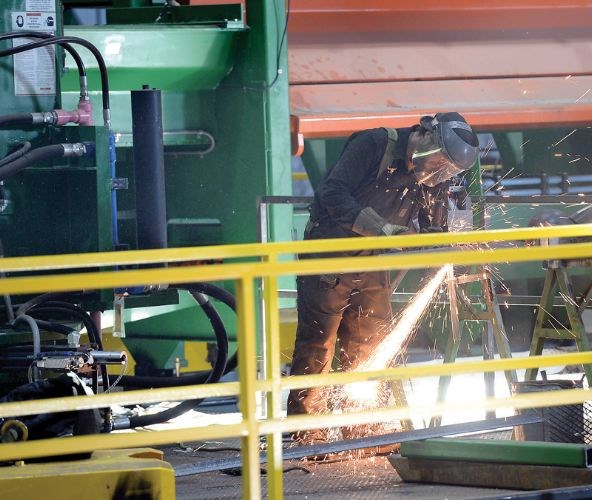Over four-and-a-half weeks, an often emotionally-charged coroners inquest into the Lakeland Mills explosions heard from 54 witnesses ranging from the widow of one the two men who died, to the workers who survived the blast, to those involved in the subsequent investigation.
Glenn Roche, 46, and Alan Little, 43, died from the severe burns they suffered in the April 23, 2012 explosion, which also left more than 20 others with injuries, many of them serious.
Prior to sending the jury away for deliberations on Thursday morning, coroner Lisa Lapointe provided a summary of what the inquest had heard saying concern about fine, dry wood dust from the beetle-killed pine the mill had been processing was a common thread in the testimony.
"The dust was described as floating in the air, clinging in the air or that it wafted," Lapointe said. "We also heard that while fires were not uncommon in the mill, the fires that broke out were different."
In particular, Lapointe made note of an incident on Jan. 19, 2012 when saw came off the large headrig, used to make initial cuts into the larger logs, and created some sparks.
Although not unheard of in a sawmill, the incident was different and much more dangerous as the sawdust in the vicinity exploded into a fireball that almost touched the sawmill's ceiling.
One witness testified that "it wasn't a fire on the floor, it was a fire in the air," Lapointe noted.
It occurred just a day before Babine Forest Products near Burns Lake was leveled in a dust-related blast that also killed two men and injured more than 20 others.
The inquest heard there were disagreements about cleanup responsibilities, increasing dust in the air when the mill's baghouse was down and less time for cleanup and challenges related to the addition of a third shift, Lapointe noted.
"We also heard that while there appears to have been a significant concern among the mill's workers, these concerns were not reflected in the minutes of safety committee meetings nor were they being reported to the union," Lapointe said. "In addition, while there were concerns about accumulation and dust as a fuel, the combustibility of wood dust was not well understood."
There were also challenges with inspections.
Based on interviews of 18 witnesses over two-and-a-half days, RCMP concluded there was no evidence of arson or criminal negligence.
The B.C. Safety Authority, which oversees the installation and operation of technical systems and equipment in workplaces, did not identify a specific ignition point but did find it originated in a spot where equipment not rated for use in a high sawdust area was running.
WorkSafeBC concluded the source of ignition was a friction point within a gear reducer on a conveyor in the basement, while a forensic engineering firm, hired on behalf of Lakeland's owners, suggested it came from static electricity in an air wand Roche was using to blow down the headrig at the time of the blast.
However, both concluded wood dust fueled the explosion.
"If you can write your initials in it or leave a footprint, it's too much dust," Lapointe said recalling testimony from one expert who also noted the incidents at Babine and Lakeland were the first sawmill explosions in recent memory.



